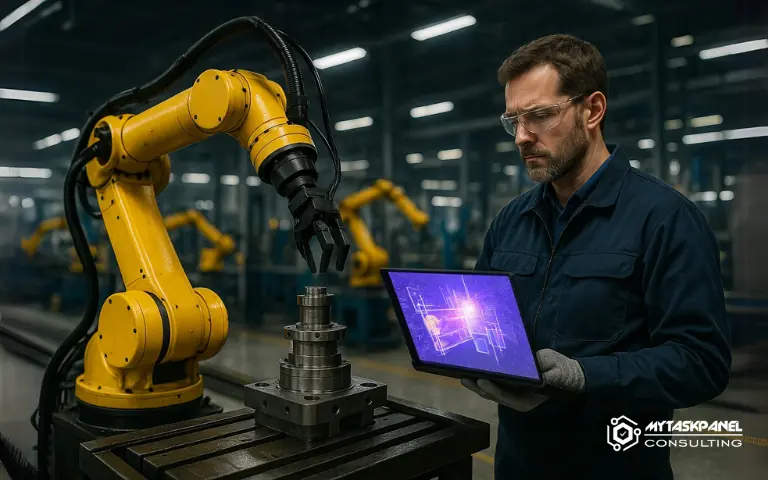The manufacturing industry is undergoing an unprecedented transformation thanks to artificial intelligence (AI). Technologies such as automation and predictive maintenance are revolutionizing production, optimizing machine performance, and reducing operational costs. Companies that implement AI can improve their efficiency, minimize errors, and increase their competitiveness in an increasingly demanding global market. In this article, we’ll explore how AI is changing manufacturing from process automation to predictive maintenance, its benefits, challenges, and future outlook.
AI-driven automation in manufacturing
AI-powered automation has drastically changed the way products are manufactured. Through advanced algorithms, smart sensors, and collaborative robots, companies can optimize production and reduce human intervention in repetitive or hazardous tasks.
Key technologies in automation
- Advanced industrial robots: capable of performing complex tasks such as welding, assembly, and packaging with greater precision and speed than human workers.
- Machine vision systems: use cameras and image recognition algorithms to detect product defects and ensure quality control.
- Planning and optimization software: manages production in real time, adjusting processes according to demand or resource availability.
- Cobots (collaborative robots): designed to work alongside humans, enhancing productivity without fully replacing workers.
Example of AI automation
Tesla is a benchmark in production line automation. Its factories use robots and AI algorithms to efficiently assemble vehicles, reducing errors and speeding up manufacturing times.
Predictive maintenance with AI
Predictive maintenance is one of the most valuable applications of AI in manufacturing. Instead of relying on scheduled or corrective maintenance, this technology analyzes real-time data to anticipate failures and avoid costly downtime.
Key technologies in predictive maintenance
- IoT sensors: collect data on temperature, vibration, pressure, and other critical machine parameters.
- Machine learning and big data: analyze large volumes of data to identify patterns and predict failures.
- Digital twins: virtual models of machines that simulate their behavior to forecast issues and improve performance.
Example of predictive maintenance with AI
General Electric has implemented predictive maintenance in its turbines and industrial engines, successfully reducing repair costs and preventing unexpected shutdowns.
Advantages of AI in manufacturing
- Increased efficiency and productivity: automation speeds up production processes and reduces downtime.
- Reduced operational costs: less material waste and a lower need for corrective maintenance.
- Improved product quality: machine vision and quality control systems ensure lower defect rates.
- Optimized maintenance: prevents unexpected failures and maximizes equipment lifespan.
- Improved workplace safety: AI reduces workers’ exposure to hazardous environments.
Challenges and disadvantages of AI in manufacturing
- High implementation costs: acquiring robots, sensors, and AI software requires a significant investment.
- Technological dependency: automated factories rely heavily on IT systems, which can lead to vulnerabilities.
- Impact on employment: automation may replace certain jobs, although it also creates new opportunities in advanced technologies.
- Cybersecurity risks: the use of IoT and connected networks increases the risk of cyberattacks.
- Need for training: specialized personnel is required to manage and maintain AI systems.
The future of AI in manufacturing
The evolution of AI in manufacturing points to greater integration with technologies such as the Internet of Things (IoT), blockchain, and quantum computing. Smart factories are expected to become autonomous and capable of making real-time decisions, optimizing production, and reducing waste.
Companies like Siemens and Bosch are leading the development of Industry 4.0, where AI plays a key role in the efficiency and sustainability of the industry.
AI in manufacturing is revolutionizing the industry through automation and predictive maintenance. These innovations improve productivity, reduce costs, and enhance factory performance. However, they also pose challenges such as initial investment and workforce training. Despite these obstacles, adopting AI is essential for companies to remain competitive in the future. With the continuous evolution of technology, manufacturing is heading toward a smarter, more efficient, and more sustainable future.

